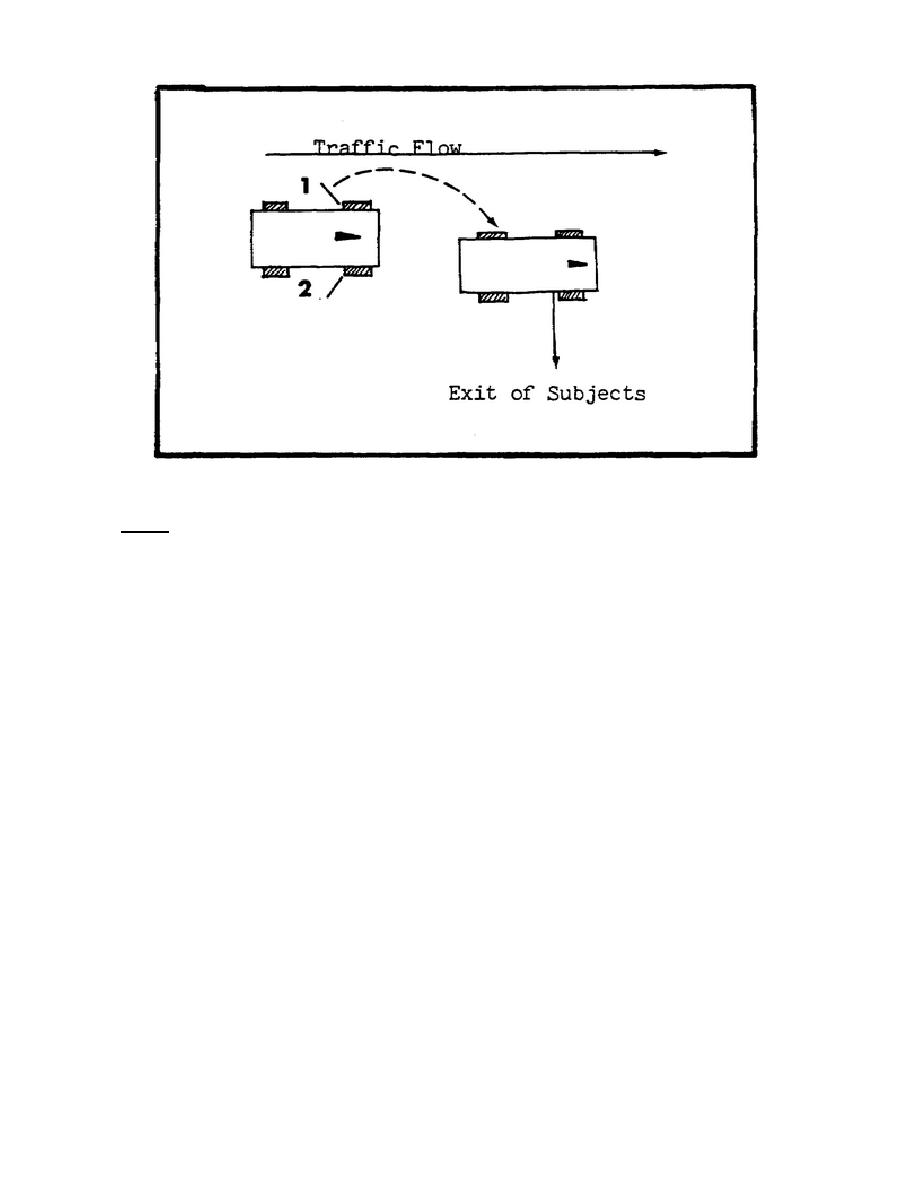
Figure 5-1.
Stop and Approach of the Subjects' Vehicle.
5.
Force.
a. When making an apprehension, use only that force necessary to
accomplish the apprehension, to prevent the subject's escape, or to overcome
his resistance.
Resisting apprehension consists of an active resistance to
restraint by the one effecting the apprehension.
The resistance may be by
flight, or it may occur by assaulting or striking the apprehender. Mere words
of protest, argument, or abuse will not constitute the offense of resisting
apprehension. When the subject's resistance ends, the force should end. The
use of more force than is required may render the investigator liable, and
subject to military punishment:
b. In situations where the use of firearms is imminent, the weapon should
be ready for use.
A weapon should never be drawn unless it is needed.
A
weapon may be used:
(1) To apprehend a known dangerous criminal.
(2) To prevent the commission of a felony or a serious offense under the
UCMJ.
A serious incident is generally any one involving the loss, damage,
5-5
MP0100



 Previous Page
Previous Page
